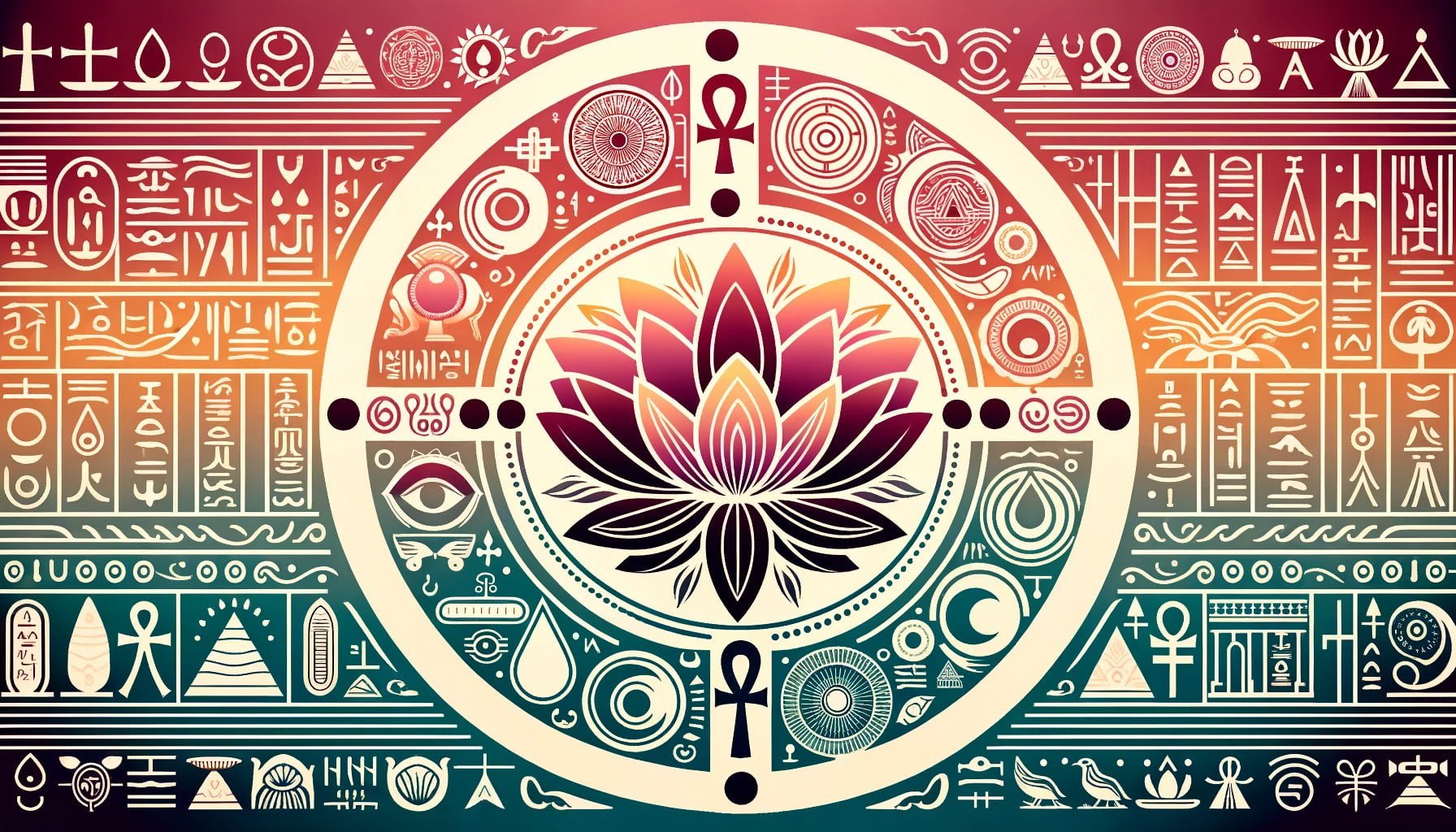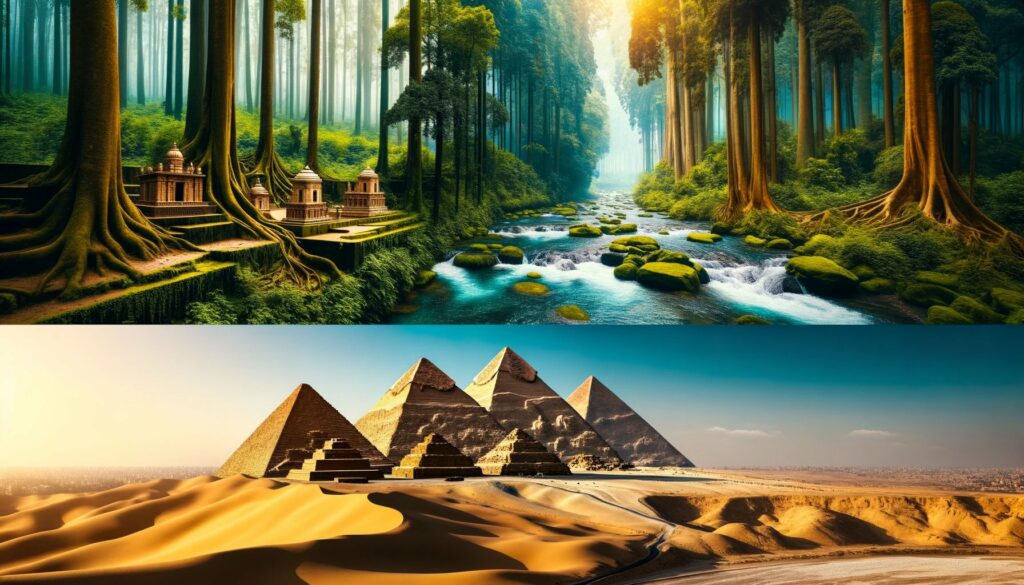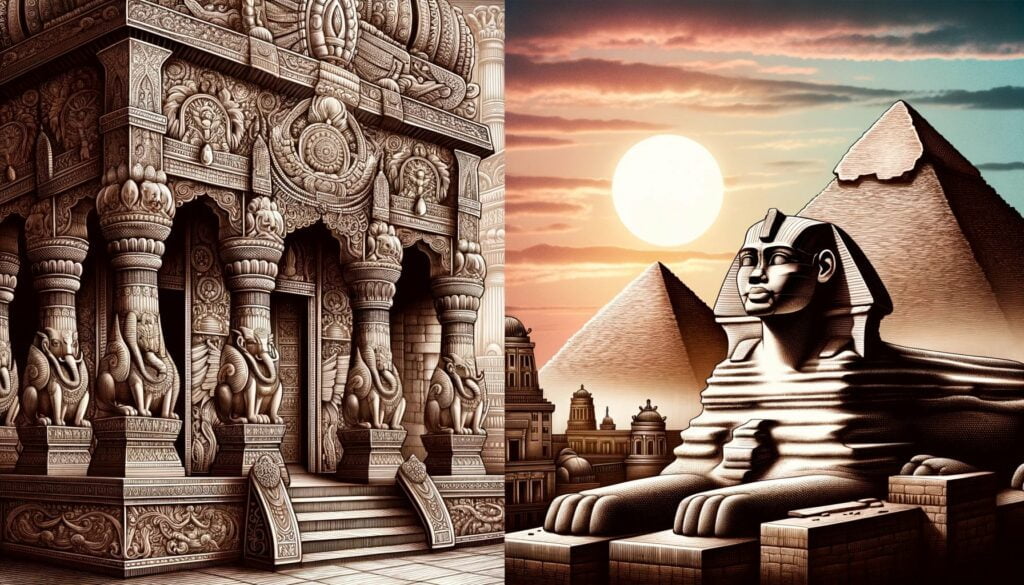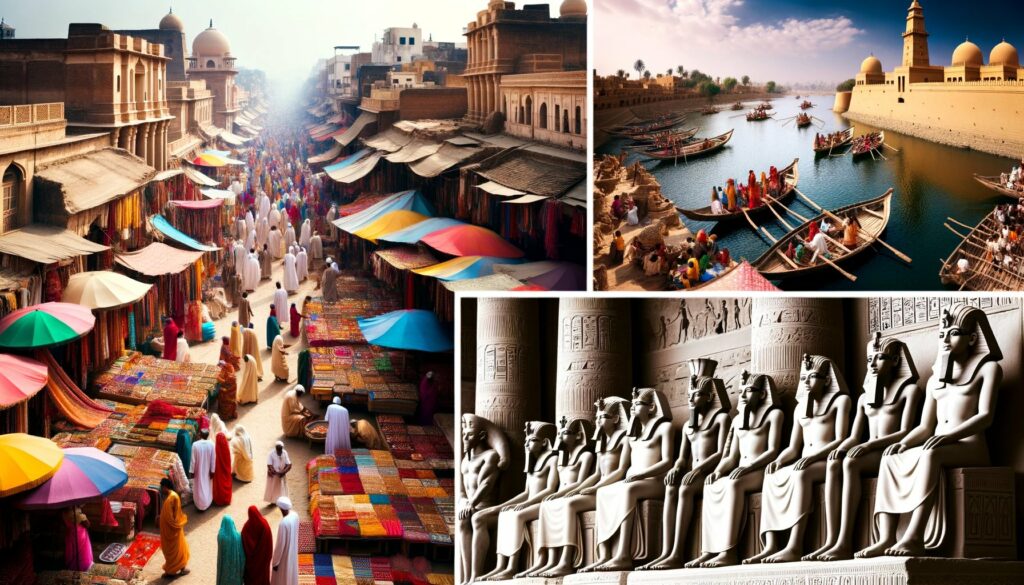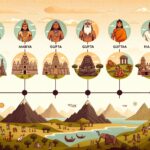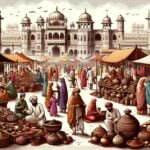Is ancient India older than Egypt? This age-old question has captivated the minds of historians and enthusiasts alike, inspiring a quest for knowledge that delves deep into the annals of time. With a passion for ancient civilizations and years of dedicated research, we embark on a journey through the ages, seeking to uncover the truth behind the fascinating timeline of these two extraordinary cultures. Join us as we unravel the mysteries and embark on an intellectual exploration of whether ancient India predates Egypt, a question that continues to intrigue and mesmerize.
Is ancient India older than Egypt?
One of the most captivating aspects of ancient civilizations is their origins and the question of which one is older. In the case of ancient India and Egypt, both have a rich and complex history that has fascinated historians and archaeologists for centuries. Now, armed with advanced technology and new archaeological discoveries, we can delve deeper into this intriguing question: Is ancient India older than Egypt?
To begin our exploration, let’s consider the established timelines of these two civilizations. Egypt, with its pyramids and pharaohs, is often considered one of the oldest known civilizations, dating back to around 6000 BC. On the other hand, India’s ancient roots can be traced back to the Indus Valley civilization which flourished around 3300 BC. From these dates alone, it would appear that Egypt predates India.
However, recent archaeological findings have challenged this traditional narrative. New excavations in India’s Indus Valley have revealed evidence suggesting that the Indian civilization might be much older than initially believed. Some researchers now propose that the roots of Indian civilization could stretch back as far as 5500 BC, making it over 2000 years older than previously thought. These findings have sparked a spirited debate among historians and experts, further fueling the interest in exploring the age-old question of whether India predates Egypt.
To gain a deeper understanding, let’s explore the historical, cultural, and geographical aspects of these two ancient civilizations. Egypt, with its awe-inspiring pyramids and intricate hieroglyphs, has left an indelible mark on the world’s imagination. The mighty Nile River played a crucial role in shaping Egyptian civilization, with fertile land along its banks facilitating agriculture and trade. The pharaohs ruled over this empire, and their majestic tombs stand as a testament to their power and influence.
In stark contrast, ancient India covered a much larger area in South Asia. It encompassed a diverse range of geographical features, stretching from the vast fertile plains of the Indus Valley to the lush forests of the Ganges. Indian civilization thrived along the banks of these mighty rivers, with the Indus Valley civilization showcasing impressive urban planning and advanced systems of sanitation. India also boasted significant achievements in mathematics, philosophy, spirituality, and literature, with the ancient texts of the Vedas containing profound philosophical insights that continue to shape Indian society and culture to this day.
While Egypt and India have their unique contributions to human history, it’s important to acknowledge that pinpointing an exact chronology for these ancient civilizations is challenging. They developed independently, each with its own distinct culture, religion, and societal structures. The mysteries surrounding their origins only enhance their allure and leave room for endless speculation and exploration.
In conclusion, the question of whether ancient India is older than Egypt remains open to interpretation and further investigation. Both civilizations have played significant roles in shaping human history, and their respective timelines continue to intrigue researchers and historians worldwide. As we uncover more archaeological evidence and delve deeper into the annals of ancient history, we may come closer to unraveling this captivating enigma. So, let us continue our intellectual journey through time, exploring and pondering the fascinating origins of these ancient civilizations.
Ancient Indian civilization is a fascinating topic that has captivated historians and archaeologists for centuries. From the majestic architecture of the Indus Valley Civilization to the philosophical teachings of ancient texts like the Vedas and Upanishads, the ancient Indian civilization offers a rich tapestry of culture, innovation, and wisdom. To delve deeper into this intriguing subject, click here: ancient indian civilization. Uncover the secrets of a civilization that flourished thousands of years ago and discover the profound influence it has had on our modern world.
Analysis of Historical and Cultural Aspects Suggesting Egypt as Older than Ancient India
The question of whether ancient India predates Egypt is a fascinating one, and to unravel this historical puzzle, we must delve into the analysis of various historical and cultural aspects. Exploring the timeline and cultural developments of both civilizations can provide valuable insights into which one may have preceded the other. Let’s embark on this intellectual journey through time, analyzing the evidence and shedding light on the intriguing question at hand.
Egypt: The Cradle of Civilization
Egypt, with its rich historical heritage, emerges as a strong contender for being one of the earliest civilizations in the world. Dating back to approximately 3100 BC, ancient Egyptian civilization thrived for over 3,000 years. The sovereign rulers of Egypt, known as pharaohs, governed a kingdom far larger than any contemporary realm. Their legacy was so powerful that they left an indelible mark on ancient history.
One notable aspect of ancient Egyptian culture was their writing system. The Egyptians primarily used two forms of writing, namely hieroglyphs and hieratic. Hieroglyphs, consisting of intricate symbols and pictographs, were used for monumental inscriptions and religious texts, while hieratic script, a cursive form of writing, served more practical purposes. These forms of writing reveal the level of sophistication achieved by the ancient Egyptians.
Egyptian Achievements in Architecture and Unity
The architectural achievements of ancient Egypt also offer clues to its antiquity. The construction of pyramids, starting with the first true pyramid by Snefru, the first king of the 4th dynasty, indicates advanced engineering skills and a well-established civilization. These awe-inspiring structures, constructed with meticulous precision, serve as a testament to the ancient Egyptians’ mastery over large-scale construction projects.
The unification of Upper and Lower Egypt under King Menes is another significant milestone in the history of ancient Egypt. This unification laid the foundation for the long-lasting Egyptian civilization we know today. It is believed to have occurred around 3100 BC, further bolstering Egypt’s status as one of the oldest civilizations.
A Glimpse into Ancient Indian History
While Egypt’s historical timeline and cultural achievements are well-documented, the history of ancient India is a complex tapestry with its own unique nuances. The Vedic period, which began around 1500 BC, witnessed the composition of the earliest Indian scriptures. These sacred texts, known as the Vedas, provide insights into the religious, philosophical, and cultural beliefs of ancient India.
Ancient Indian history unfolds through various kingdoms and empires, including the Mauryan and Gupta empires. These dynasties left behind a rich legacy of art, literature, and intellectual achievements. However, pinpointing the exact age of ancient India and determining whether it predates Egypt remains somewhat elusive.
Unveiling the Timeline: Analyzing Historical and Cultural Aspects
To shed further light on the intriguing question of whether ancient India predates Egypt, thorough analysis of historical and cultural aspects is crucial. Exploring ancient scripts, archaeological discoveries, and cultural interactions can provide valuable insights.
While Egypt’s recorded history dates back to around 3100 BC, ancient India’s earliest known scriptures, the Vedas, were composed around 1500 BC. This indicates that there was human civilization and cultural development in both regions during different time periods.
Moreover, the archaeological evidence unearthed in Egypt, such as the majestic pyramids and elaborate tombs, suggests a more advanced civilization. The elaborate burial practices and monumental structures present a level of sophistication and centralized power that may predate ancient India.
Conclusion
Analyzing historical and cultural aspects leads us to intriguing possibilities regarding whether Egypt is older than ancient India. The evidence suggests that ancient Egyptian civilization emerged earlier and had achieved significant advancements in numerous fields. While ancient India also boasts a rich heritage, the solid historical timeline and cultural achievements of Egypt make it a strong contender for one of the oldest civilizations. However, further research and exploration are necessary to unravel the complete truth behind this captivating question. So, let us continue our quest for knowledge about the origins of these ancient civilizations and their intricate histories.
Comparison of Key Milestones and Developments in Ancient India and Egypt
When we explore the ancient civilizations of India and Egypt, we are transported to a world filled with wonders, mysteries, and rich cultural legacies. The question that often arises is, “Did ancient India predate Egypt?” To unravel this intriguing quandary, we must delve into the depths of history, archaeology, and geography. So, let’s embark on an intellectual journey through time to compare the key milestones and developments in ancient India and Egypt!
Ancient India: The Indus Valley Civilization
Our exploration of ancient India begins with the Indus Valley Civilization, which flourished around the same time as ancient Egypt. This remarkable civilization existed from approximately 3300 BCE to 1300 BCE and is known for its well-planned cities, advanced drainage systems, and sophisticated craftsmanship. The cities of Harappa and Mohenjo-Daro, with their grid-like streets and intricate architectures, showcase the remarkable achievements of this civilization.
During this period, the people of the Indus Valley Civilization engaged in trade and maintained cultural connections with other regions. The discovery of Indus Valley seals in Mesopotamia and Sumeria highlight the far-reaching influence of ancient India.
Ancient Egypt: The Land of Pharaohs
Moving across continents to ancient Egypt, we encounter a civilization that mesmerizes us with its enigmatic pyramids, grand temples, and complex religious beliefs. Egypt is often considered older than India, with the first dynasty emerging around 3100 BCE. This unified kingdom, led by powerful pharaohs, showcased significant achievements in architecture, engineering, and cultural development.
The mighty Nile River played a pivotal role in shaping Egypt’s civilization. It provided fertile land for agriculture, ensuring the prosperity and stability of the kingdom. Protected by vast deserts, Egypt enjoyed relative isolation, which allowed it to cultivate a distinct culture, complete with its own hieroglyphic writing system and religious practices.
Cultural Exchanges and Influences
While ancient India and Egypt evolved independently, they were not entirely isolated from each other. The ancient world was filled with bustling trade routes and maritime connections, facilitating cultural exchanges and influences.
Elements of ancient Egyptian culture can be traced in the Indus Valley Civilization. The ancient Indian epic, the Ramayana, mentions contact between Egypt and India, further indicating a connection between the two civilizations.
Decoding the Timeline: A Complex Puzzle
Now, let us address the burning question: Did ancient India predate Egypt? This is a complex puzzle that requires meticulous examination of historical evidence, archaeological findings, and cultural contexts.
Egypt’s earliest dynastic period dates back to around 3100 BCE, while the Indus Valley Civilization thrived during the same time. This makes it challenging to determine a clear chronology of which civilization predates the other. Both ancient India and Egypt exhibited remarkable developments and cultural advancements during different time periods.
Unveiling the Timeline: A Historical Conundrum
In the quest to determine if ancient India predates Egypt, we encounter contradictory evidence and differing viewpoints. The rich tapestry of history, influenced by various factors such as geography, religion, and political dynamics, adds layers of complexity to this debate.
While the archaeological evidence in Egypt, such as the pyramids and elaborate tombs, suggests a more advanced civilization, we must not discount the achievements of ancient India. The well-planned cities, the pioneering urban planning, and the highly developed drainage systems of the Indus Valley Civilization are evidence of a sophisticated society.
The Enduring Significance
Regardless of which civilization predates the other, both ancient India and Egypt hold immense significance in shaping the history of human civilization. They laid the foundation for later empires and cultures, leaving behind a rich legacy that continues to captivate and inspire us today.
As we journey through time, exploring the wondrous achievements of ancient India and Egypt, let us marvel at the ingenuity and tenacity of these great civilizations. The comparison of key milestones and developments in ancient India and Egypt allows us to deepen our understanding of our shared human history. It invites us to appreciate the diverse tapestry of human experiences and the remarkable achievements that continue to intrigue and awe us in the present day.
FAQ
Question 1
Is there evidence to support the claim that ancient India predates Egypt?
Answer 1
Yes, there is evidence to suggest that ancient India may have existed before Egypt. The Indus Valley civilization in India, which dates back to around the same time period as ancient Egypt, is one example. Additionally, archaeological findings and historical texts have provided insights into the ancient Indian civilization that showcase its advanced urban planning, trade networks, and complex social structures.
Question 2
What are the origins of ancient Indian civilization?
Answer 2
The origins of ancient Indian civilization can be traced back to the Indus Valley civilization, which emerged around 3000 BC. This ancient civilization flourished in the Indus River basin of present-day Pakistan and Northwest India. The cities of Harappa and Mohenjo-daro were major urban centers of this civilization, exhibiting impressive architectural planning and sophisticated systems of sanitation.
Question 3
Did ancient India have any cultural or religious influences from Egypt?
Answer 3
While direct cultural or religious influences from Egypt on ancient India are not widely documented, there might have been indirect exchanges of ideas and influences. Both ancient Egypt and ancient India had contact with other civilizations through trade routes and shared cultural interactions. These interactions may have indirectly influenced the development of certain cultural and religious practices in ancient India.
Question 4
What were the main cultural and religious beliefs in ancient India?
Answer 4
Ancient India had a rich and diverse set of religious and cultural beliefs. The religious landscape ranged from early forms of Hinduism to various indigenous and tribal religions. The Vedic period, which followed the decline of the Indus Valley civilization, introduced the concepts of ritual sacrifices and the worship of deities such as Indra, Agni, and Varuna. The influence of Buddhism, Jainism, and other philosophies also emerged during later periods in ancient India.
Question 5
How did the geography of ancient India shape its civilization?
Answer 5
The geography of ancient India played a significant role in shaping its civilization. The fertile lands of the Indus River basin provided agricultural opportunities and supported the growth of ancient Indian cities. The Himalayan mountain range to the north acted as a natural barrier, protecting the region from invasions. Additionally, the Indian Ocean facilitated maritime trade, connecting ancient India with other civilizations and creating cultural exchanges.
- Star Ring Trends: Etsy vs Amazon - March 28, 2025
- Boost Pollinator Habitats: Baby Blue Eyes Sustainable Farming Guide - March 28, 2025
- Protect Big Black Bears: Effective Conservation Strategies - March 28, 2025
